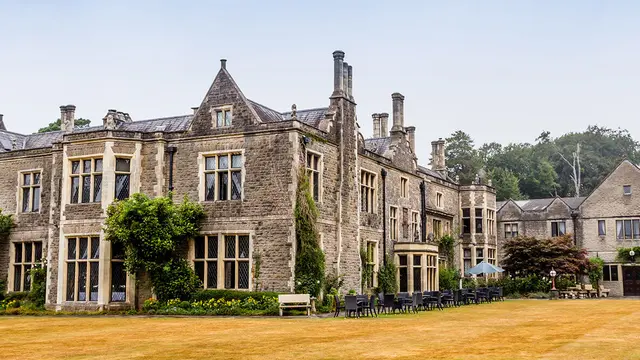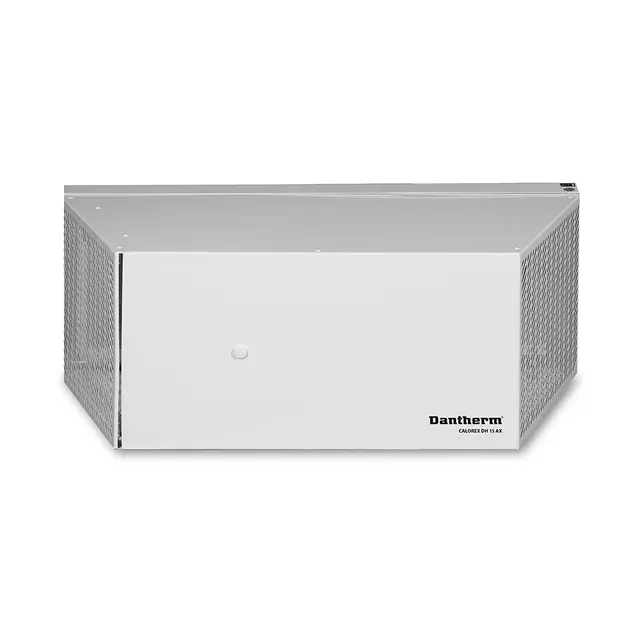Control humidity and help heritage buildings stay standing

- Home
- Insights
- Humidity control and drying insights
- Control humidity and help heritage buildings stay standing
In this article, you’ll find out why moisture in the atmosphere is one of the biggest dangers to heritage buildings, inside and out, and how an effective dehumidification system can help them live on as public treasures.
As well as being the guardians of priceless artworks and unique artefacts, heritage-listed buildings are of significant historical importance themselves, and often need just as much care as the items they protect.
Heritage sites that have been standing for hundreds, if not thousands, of years are especially sensitive to environmental factors. In particular, changes in relative humidity.
What is relative humidity and why is it important?
Relative humidity (RH) is a unit that identifies the amount of water vapour in the air, in relation to the amount of water vapour that the air can hold at its current temperature.
RH is directly linked to temperature and warm air can hold more moisture than cold air. For example, there will be more moisture in the air at 50% RH when the temperature is 25°C than there would be at 10°C.
When air cools, the RH level will rise until reaching 100%, this is known as the ‘dew point’. This means that the air has reached its maximum water content at its current temperature and will release excess moisture in the form of condensation. Inside buildings, this often happens when warm, saturated air comes into contact with cold surfaces like metal fittings or single-glazed windows.
Generally, heritage sites should aim to keep relative humidity levels at around 40-65%
When RH levels are too low:
Cracks can form in organic materials such as wood and leather.
When RH levels are too high:
There is an increased risk of mould growth, dry rot and insect infestation.
Why are heritage buildings so susceptible to moisture damage?
Masonry and timber make up the key structural elements of most heritage-listed buildings across Europe. And while the widespread use of these building materials has stood the test of time, unwanted moisture intrusion continues to be the number one cause of structural deterioration.
Unregulated humidity can cause mortar to crack and a phenomenon known as ‘spalling’ in stone and brickwork. This happens when moisture that seeps into the masonry exerts outward pressure, resulting in peeling and in some cases, large sections of the building crumbling away. Wall rot and the staining of interior finishes will also become apparent as water finds its way inside the building.
As timber breathes, it takes on some of the moisture in the atmosphere and releases it as the air begins to dry out. Over time, this process can cause wood to expand, contract, warp and split, damaging vital parts of a structure, such as joists, beams and floorboards.
What causes humidity levels to fluctuate?
The outdoor environment
The outdoor climate is out of everyone’s control and unless you have a completely sealed building you will get infiltration. For that reason, if the external conditions have a high moisture content then this moisture will enter the room increasing the humidity. Likewise if the external conditions are very dry then the space will naturally dehumidify.
Heating
Heating masks the affect of moisture in the air as the relative humidity will decrease as the space it heated, although the actual moisture content will remain the same. At these higher temperatures, the air is likely to pick up excess moisture which may not be a problem whilst the space is being heated. However, when the heating is switched off and the room cools due to the additional moisture, the air will have a higher dew point and will condense on surfaces at a higher temperature than before.
Visitors
Making guests feel comfortable is an important part of keeping a heritage site open to the public. However, a constant influx of people, spotlighting for displays, as well as wet jackets and umbrellas brought in from outside will all raise the temperature and increase the moisture content of the space.
The building itself
Areas with little ventilation, such as cellars and basements or rooms with high ceilings and poor insulation, can create localised pockets of hot and cold microclimates inside a building, each reacting differently to temperature and humidity.
How can you maintain optimum humidity in heritage buildings?
Operating in a range of RH and temperature levels, Dantherm Group dehumidifiers come with an integral humidistat that helps keep humidity in control.
The process
Damp air is drawn into the dehumidifier and across a refrigerated coil
The air is cooled below its dew point, condensing the water vapour
Latent heat energy is recovered and re-used
Cooled air passes across the condenser and reheated
The warm dry air is then returned to the room at the required humidity

Related products
Featured insights

Learn how to increase efficiency without compromising on climate control performance.

Purpose-built solutions for industry leaders

Save your building from harmful moisture
Need help with choosing the right solution? Our team of over 100 climate control experts can assist.
You can also reach out or join the discussion on our Social Media. Check out our LinkedIn page.





